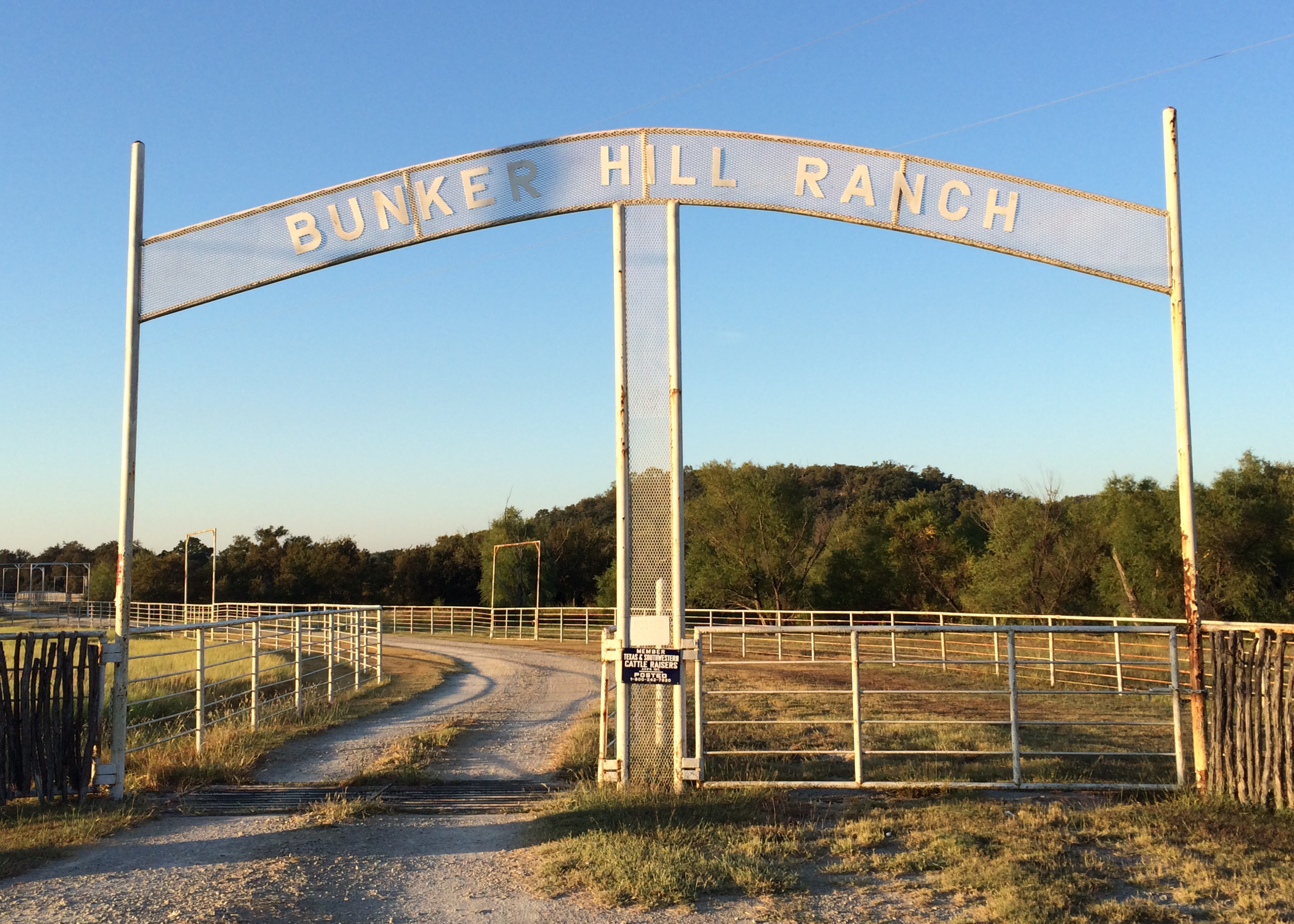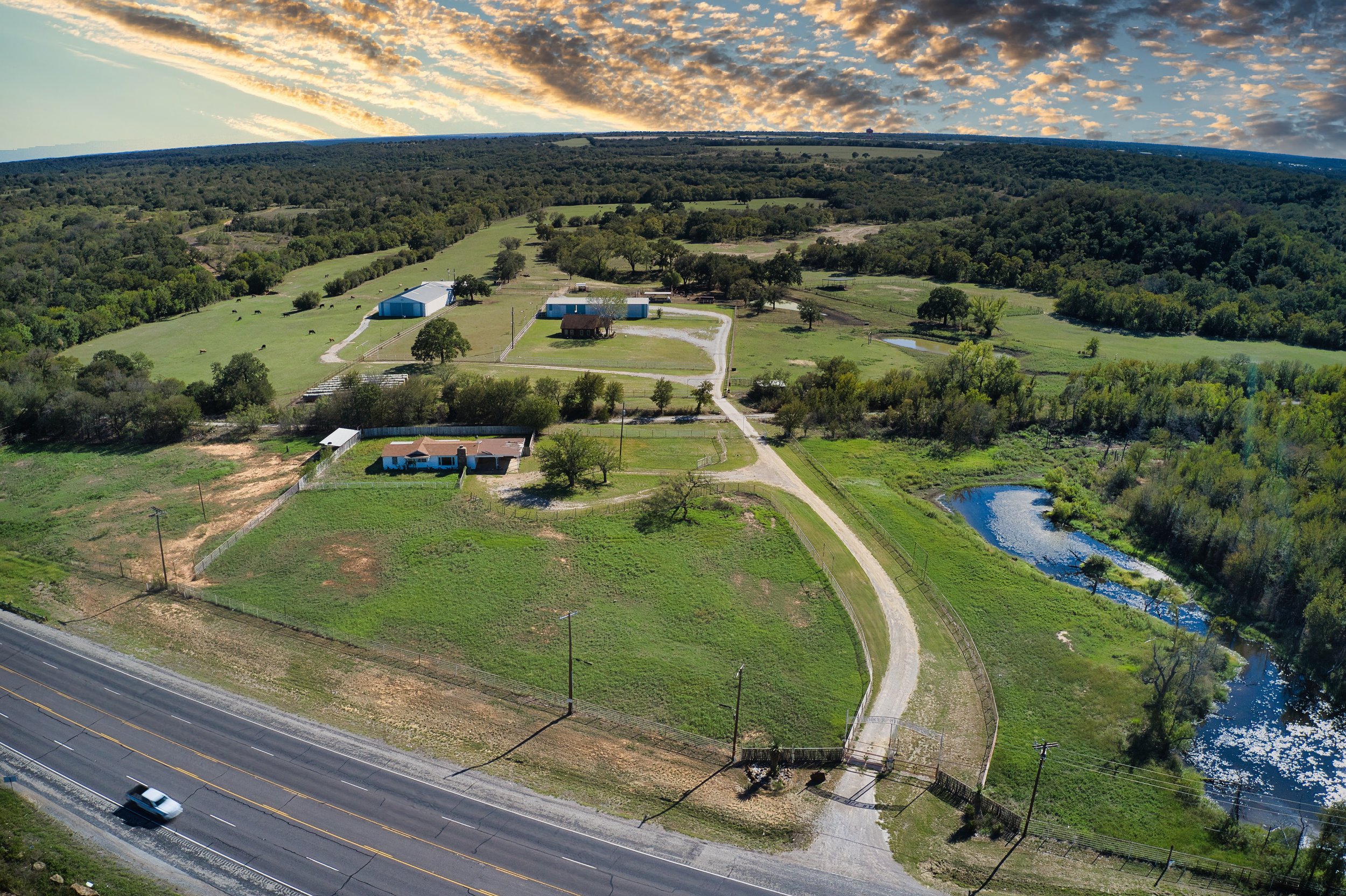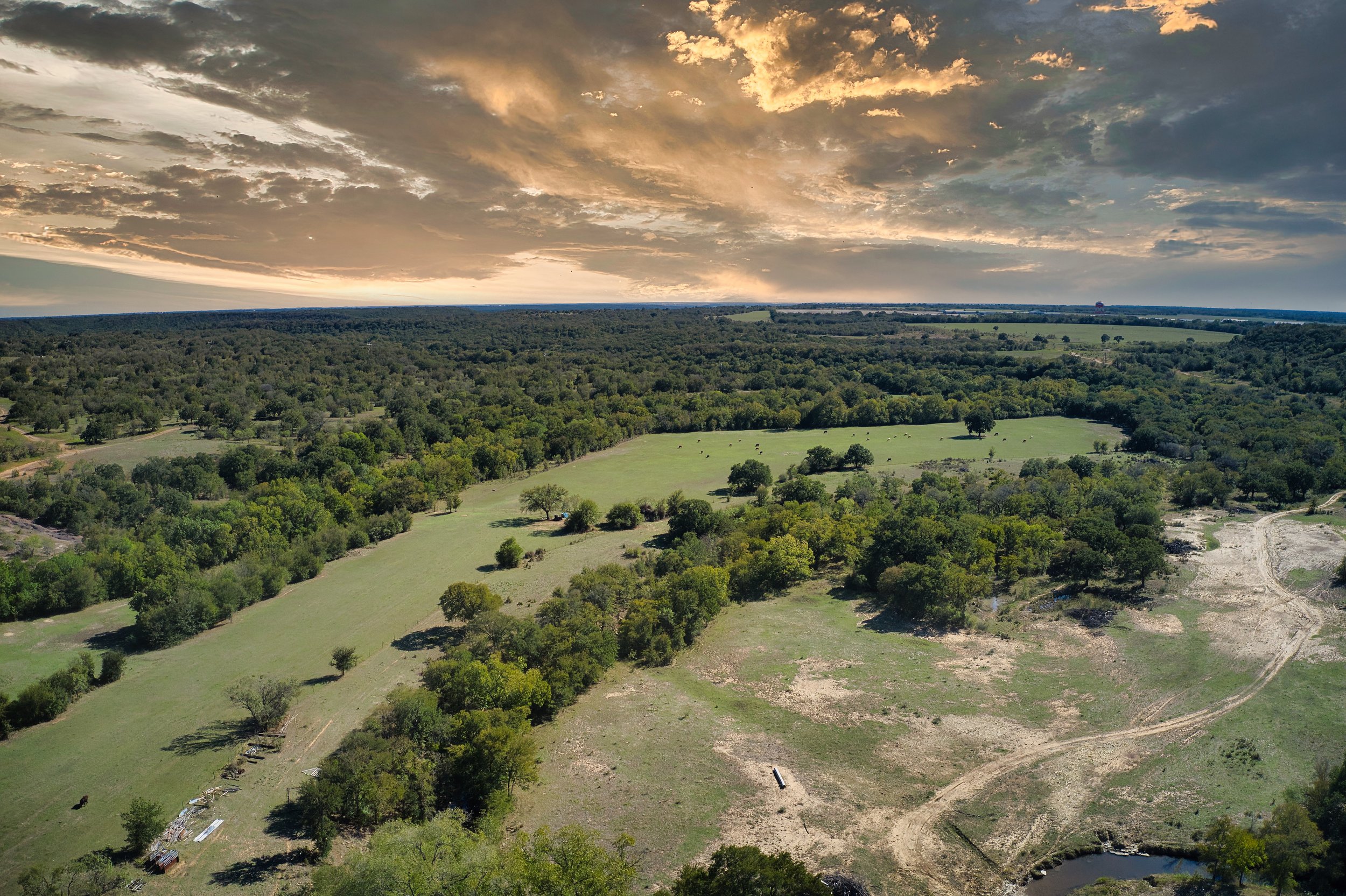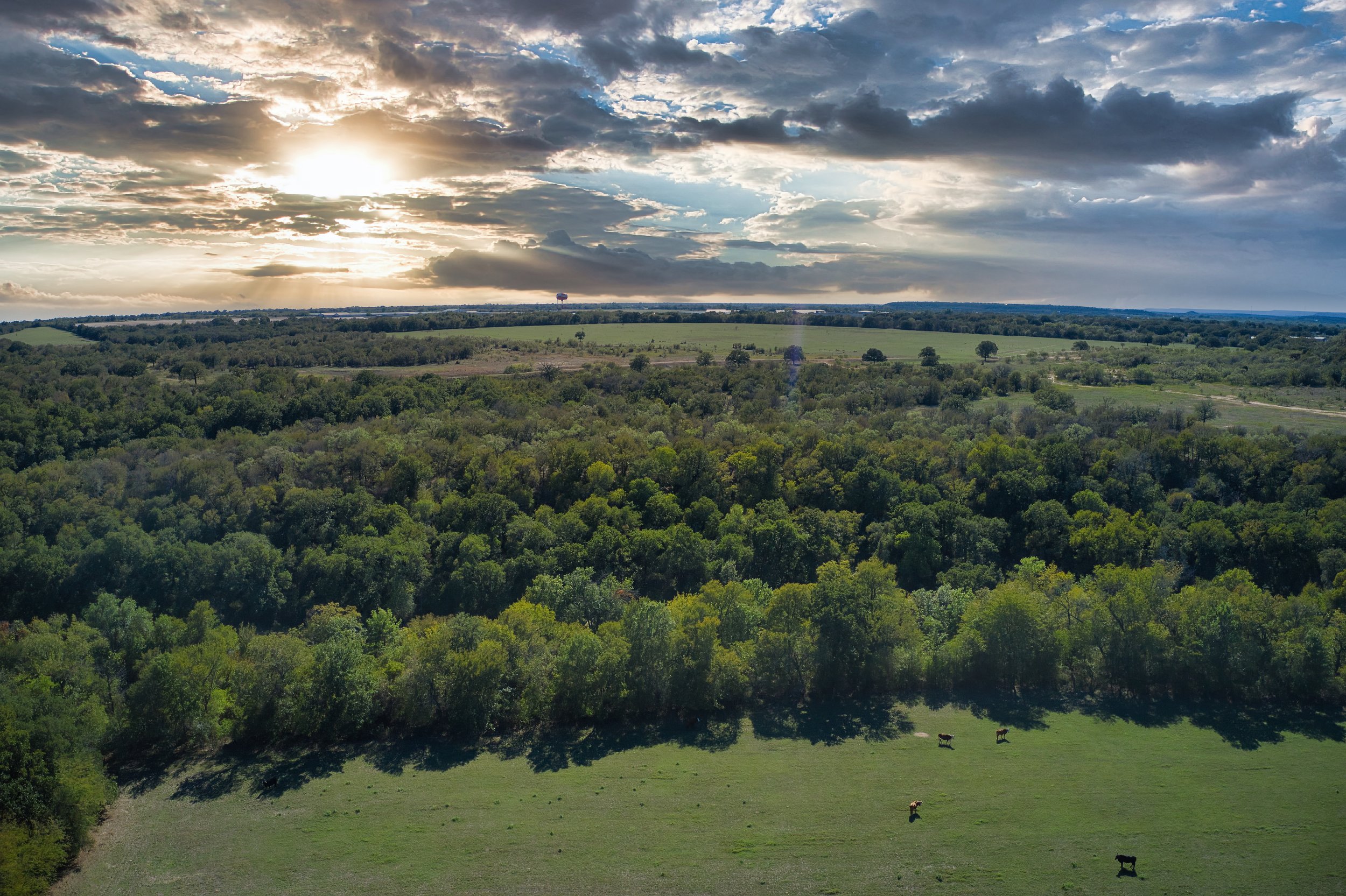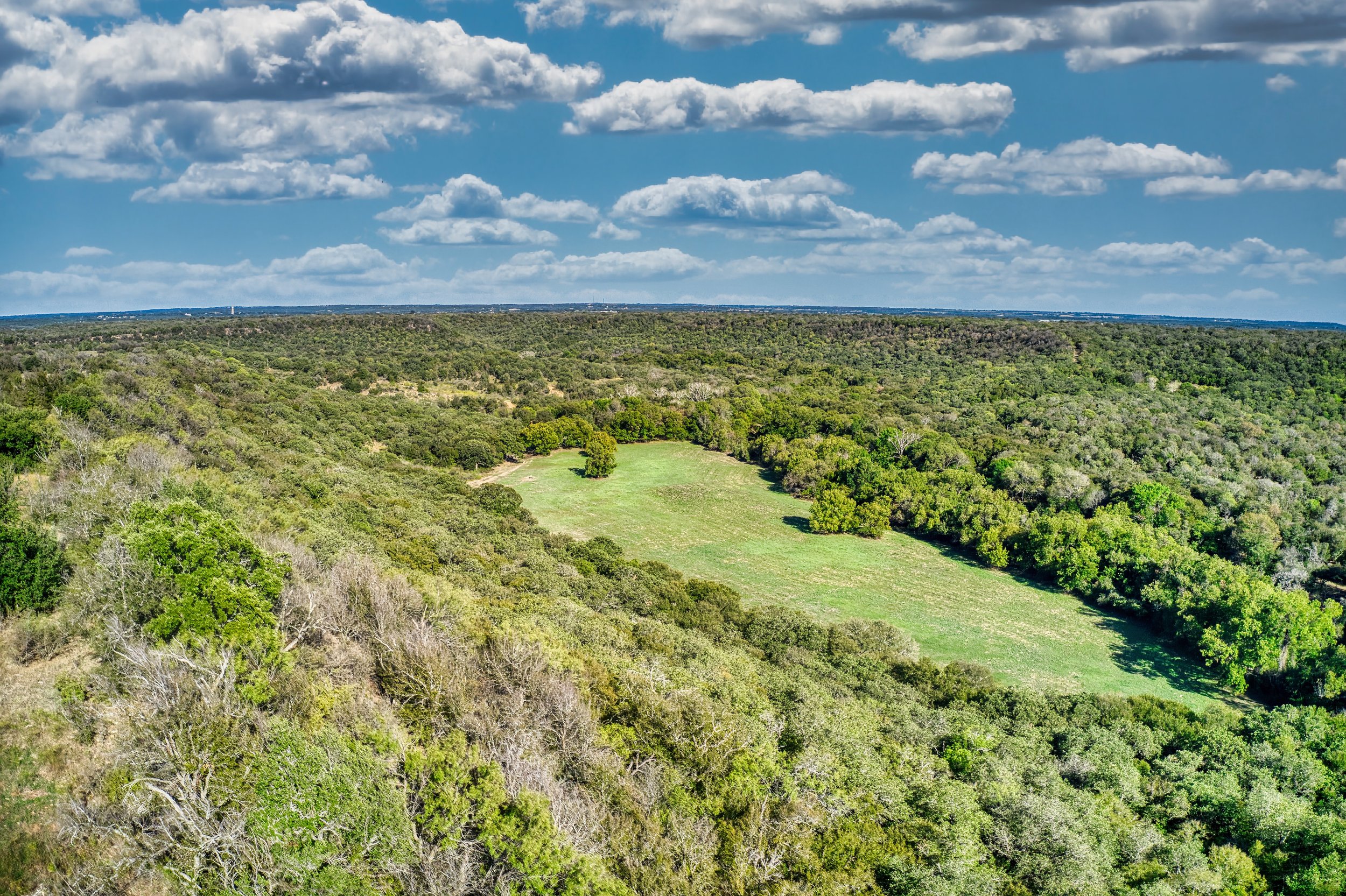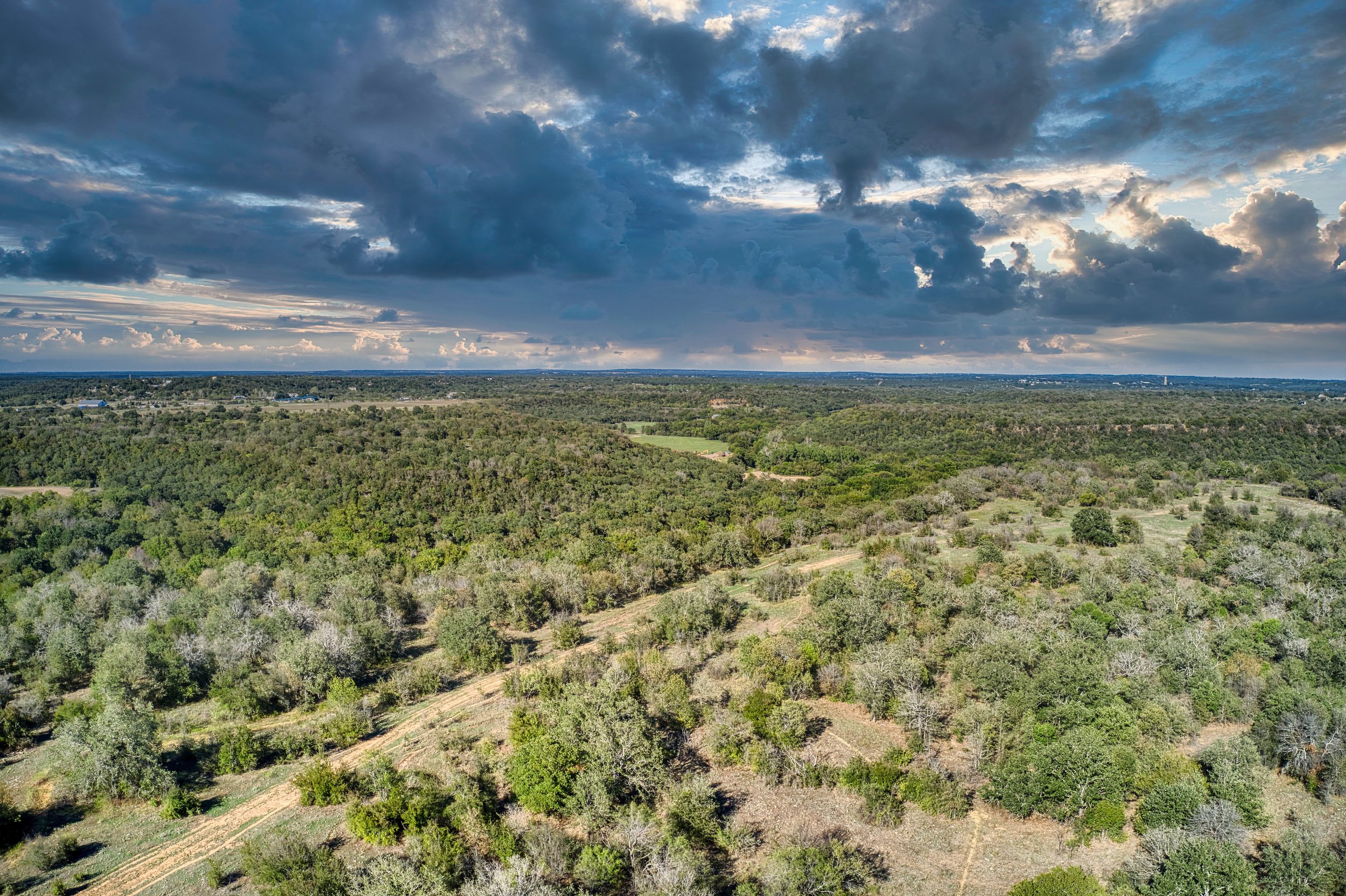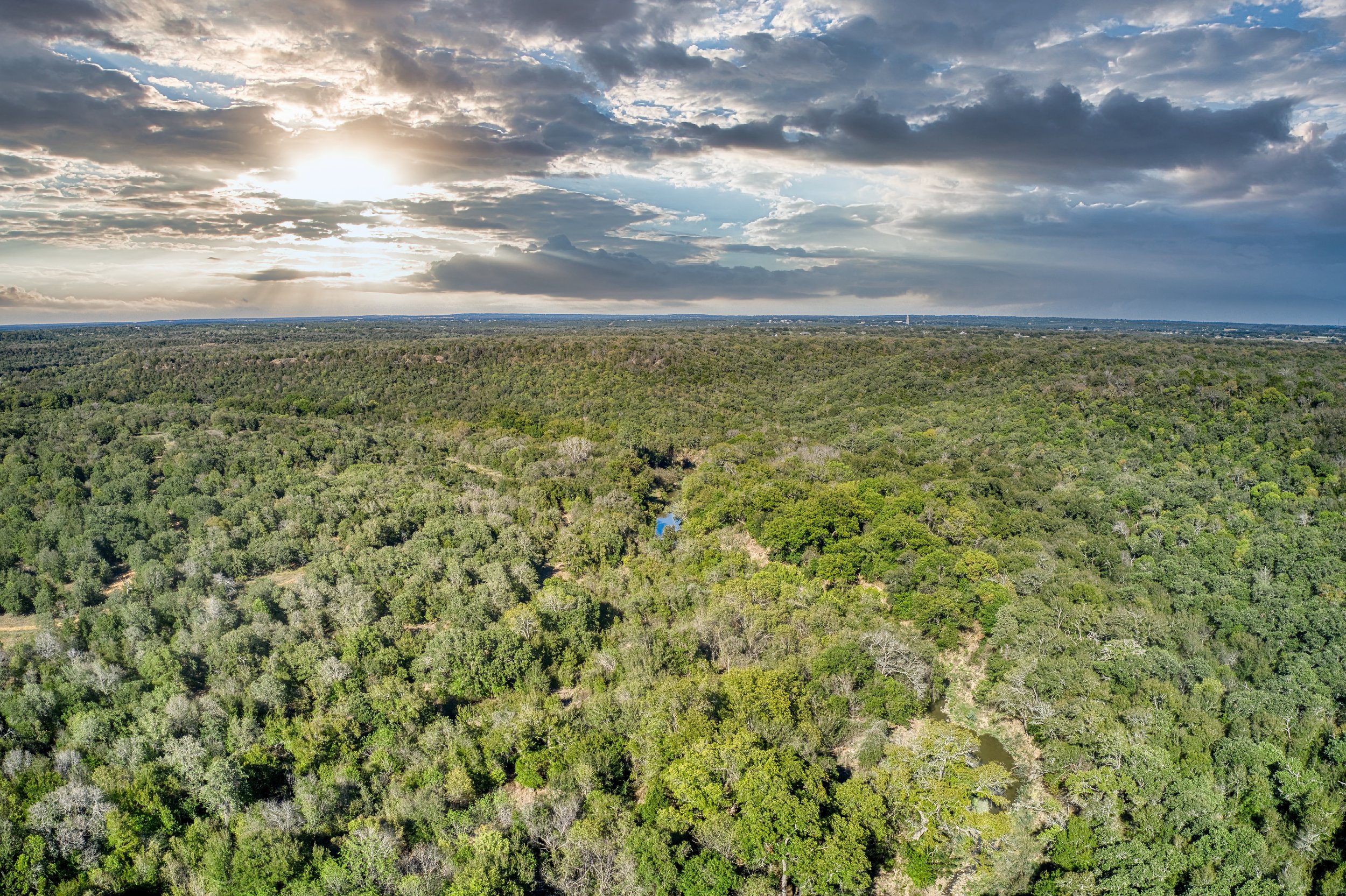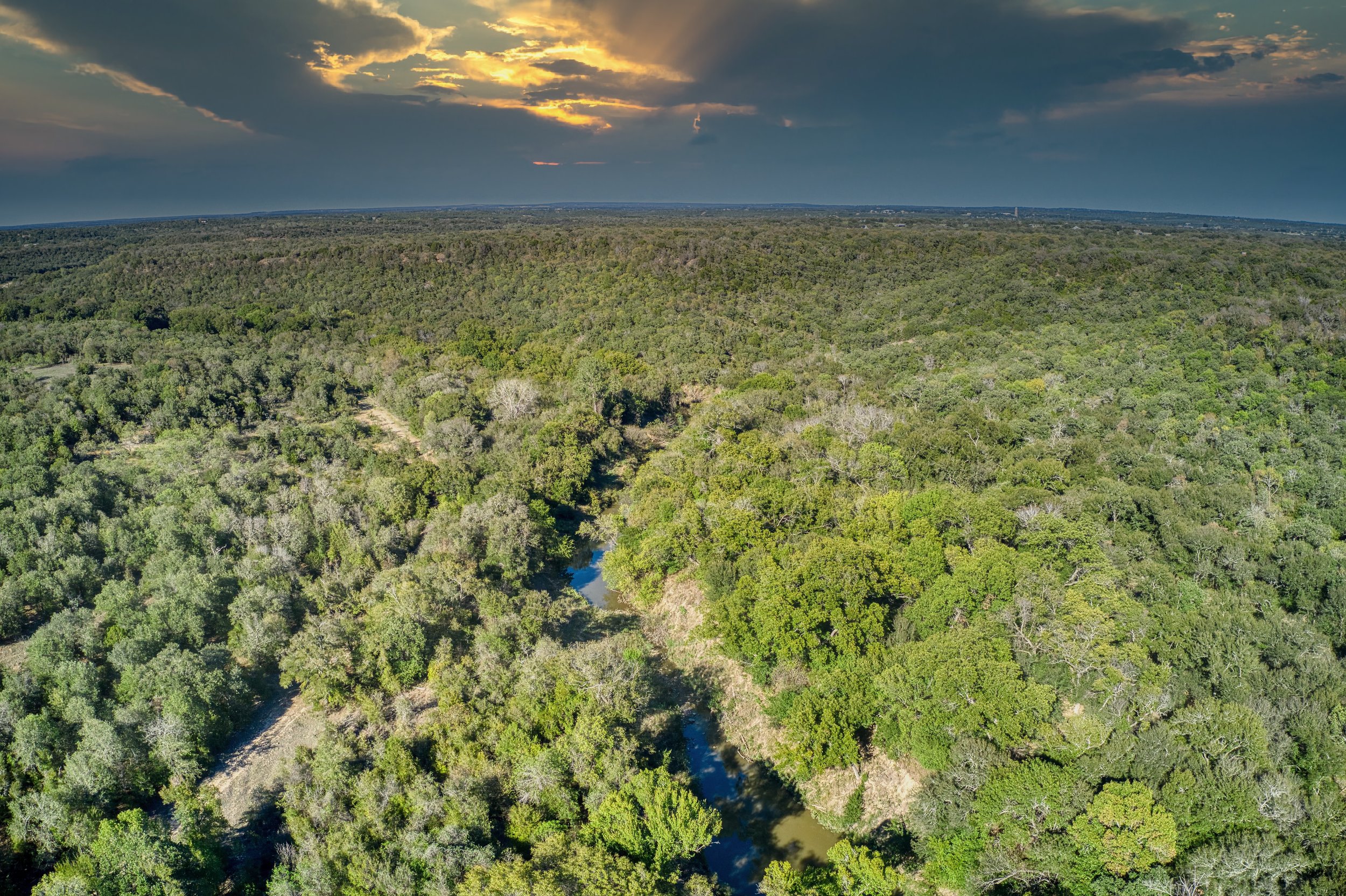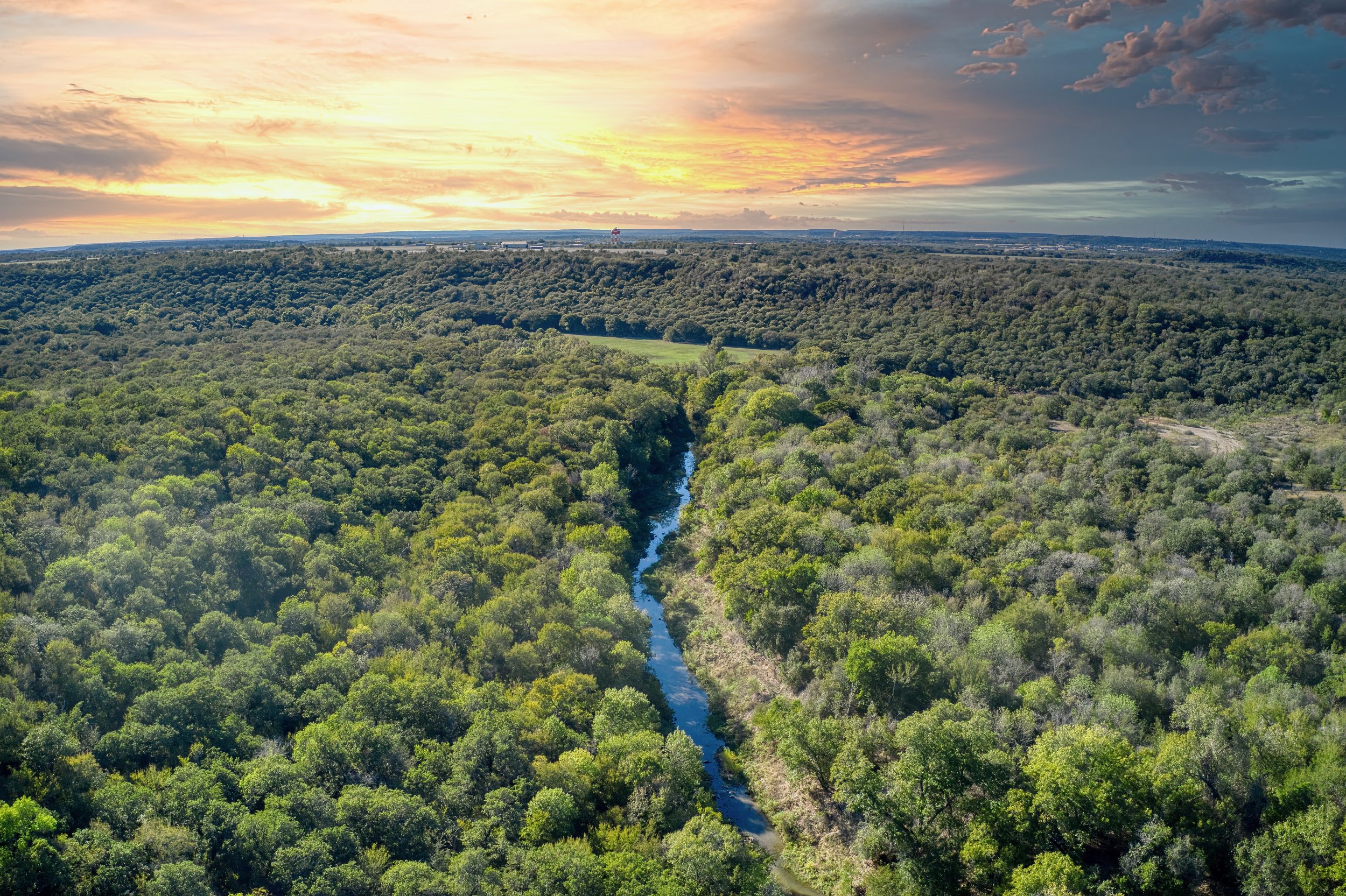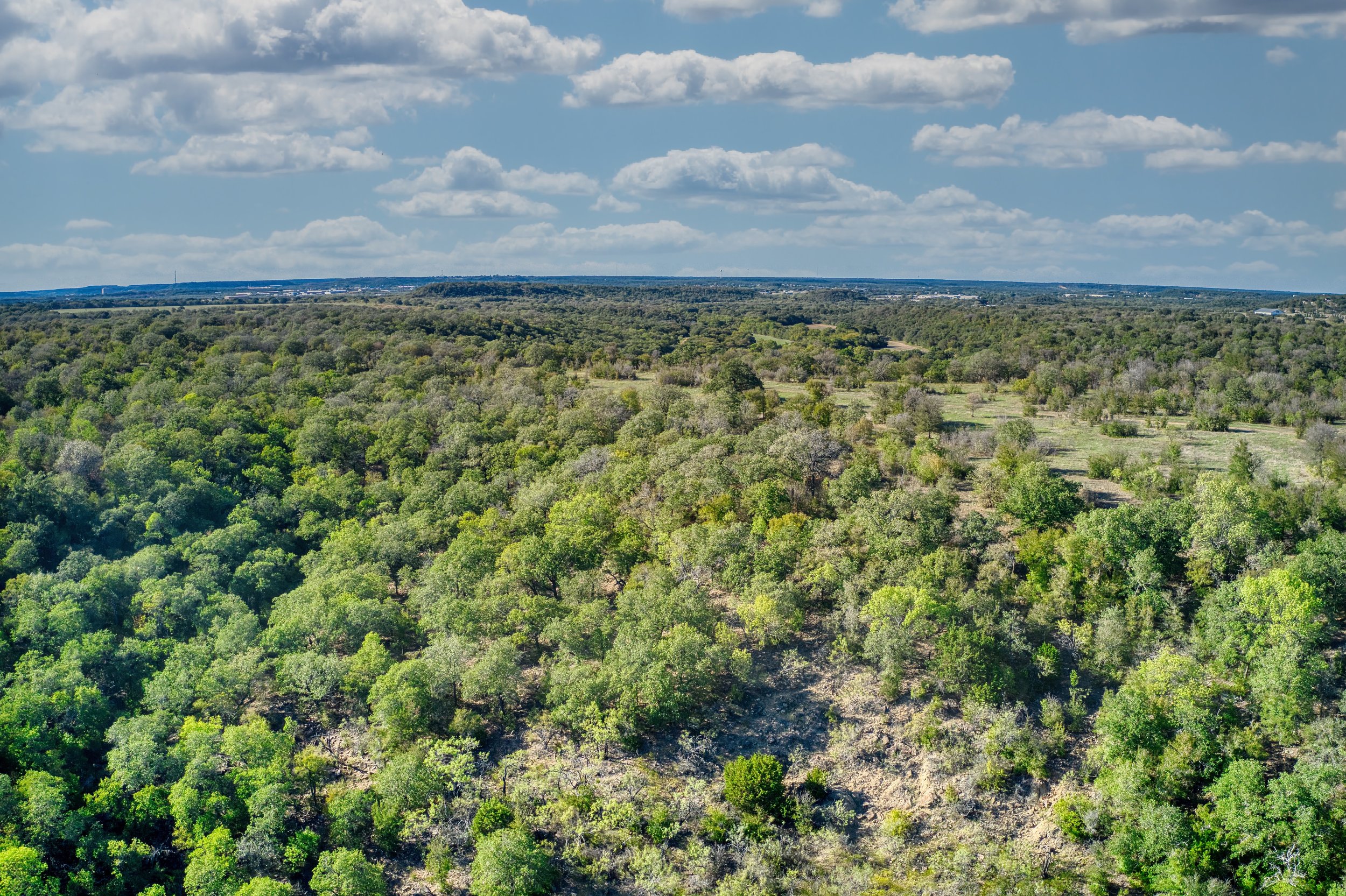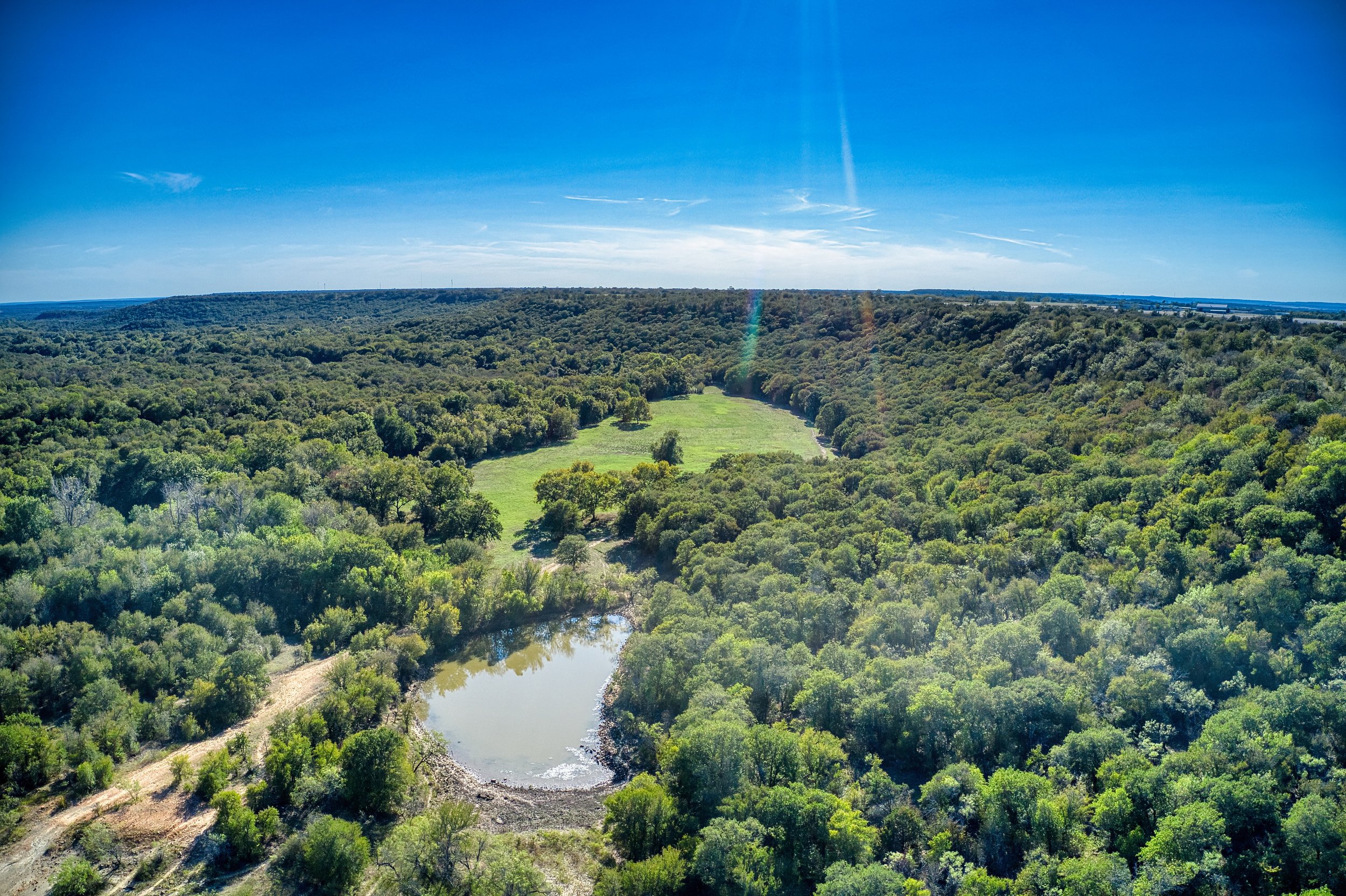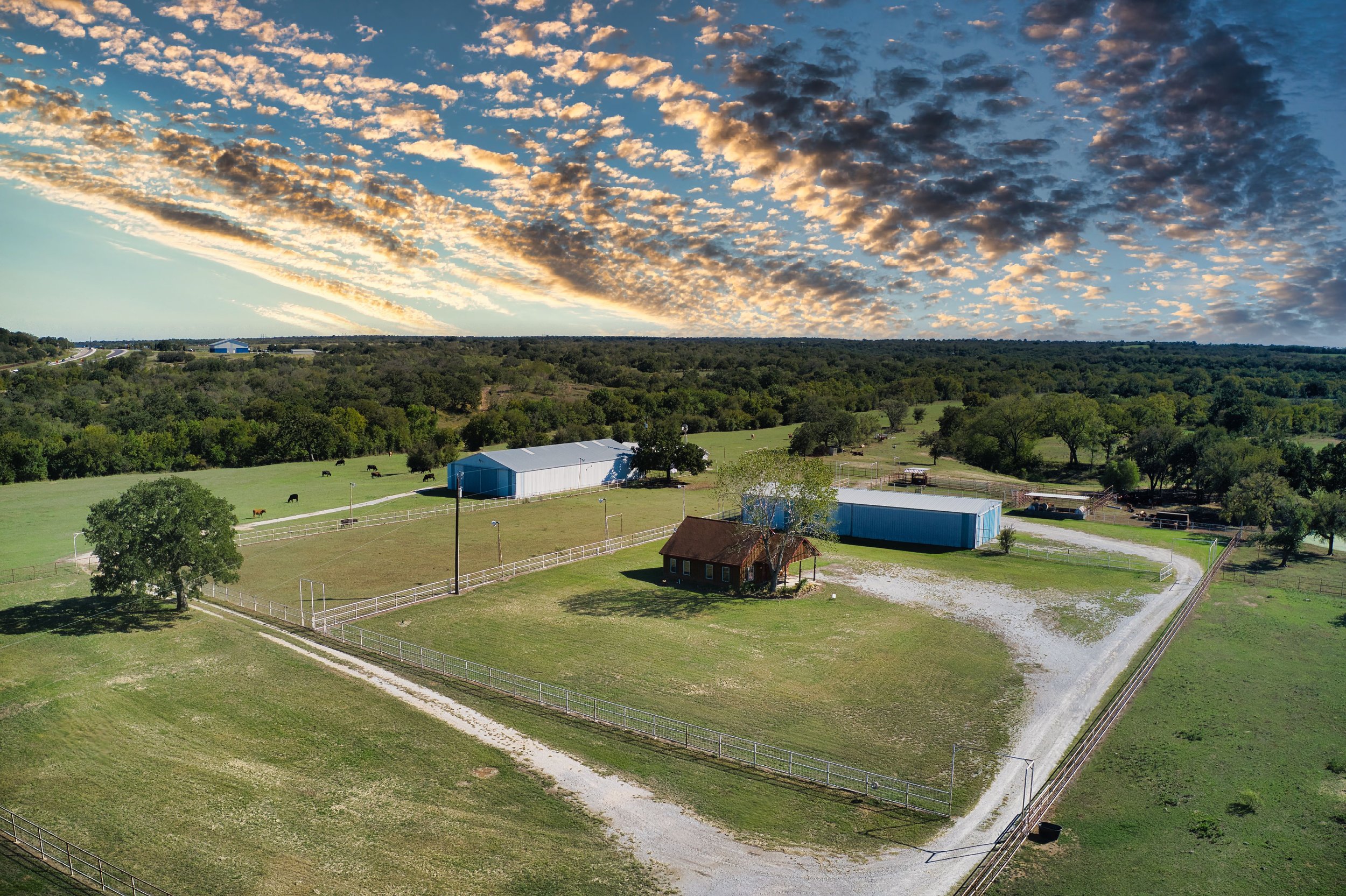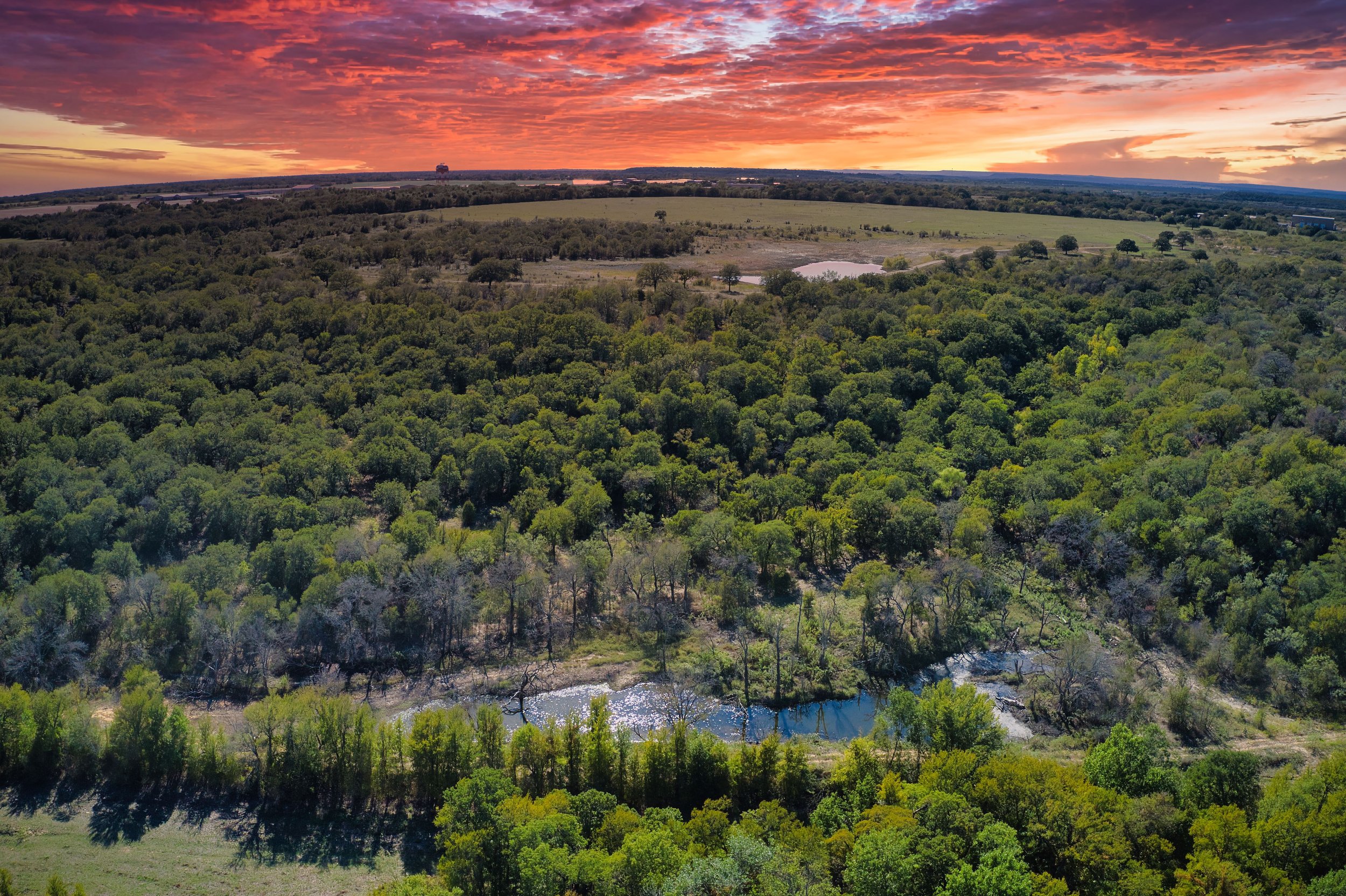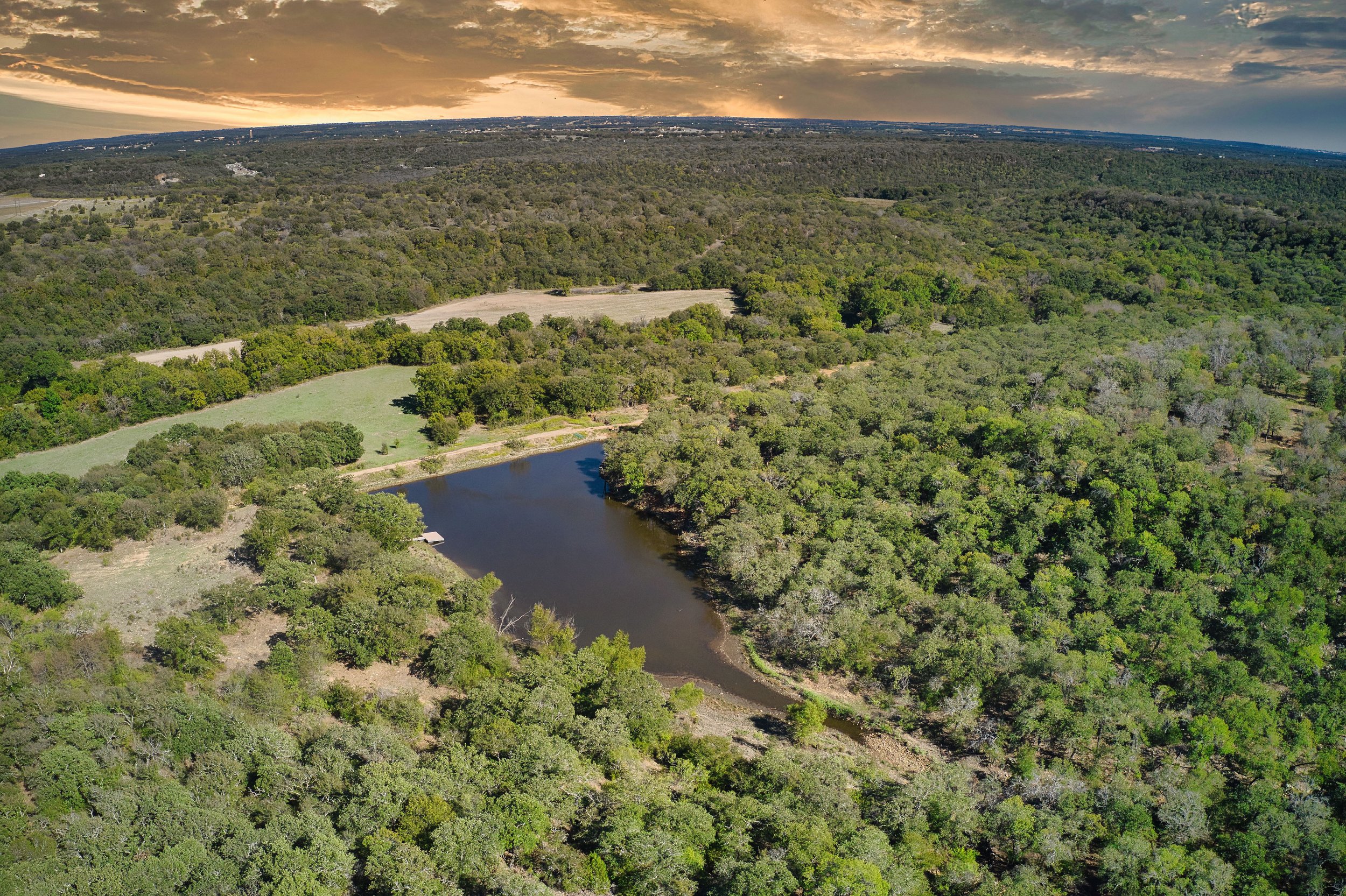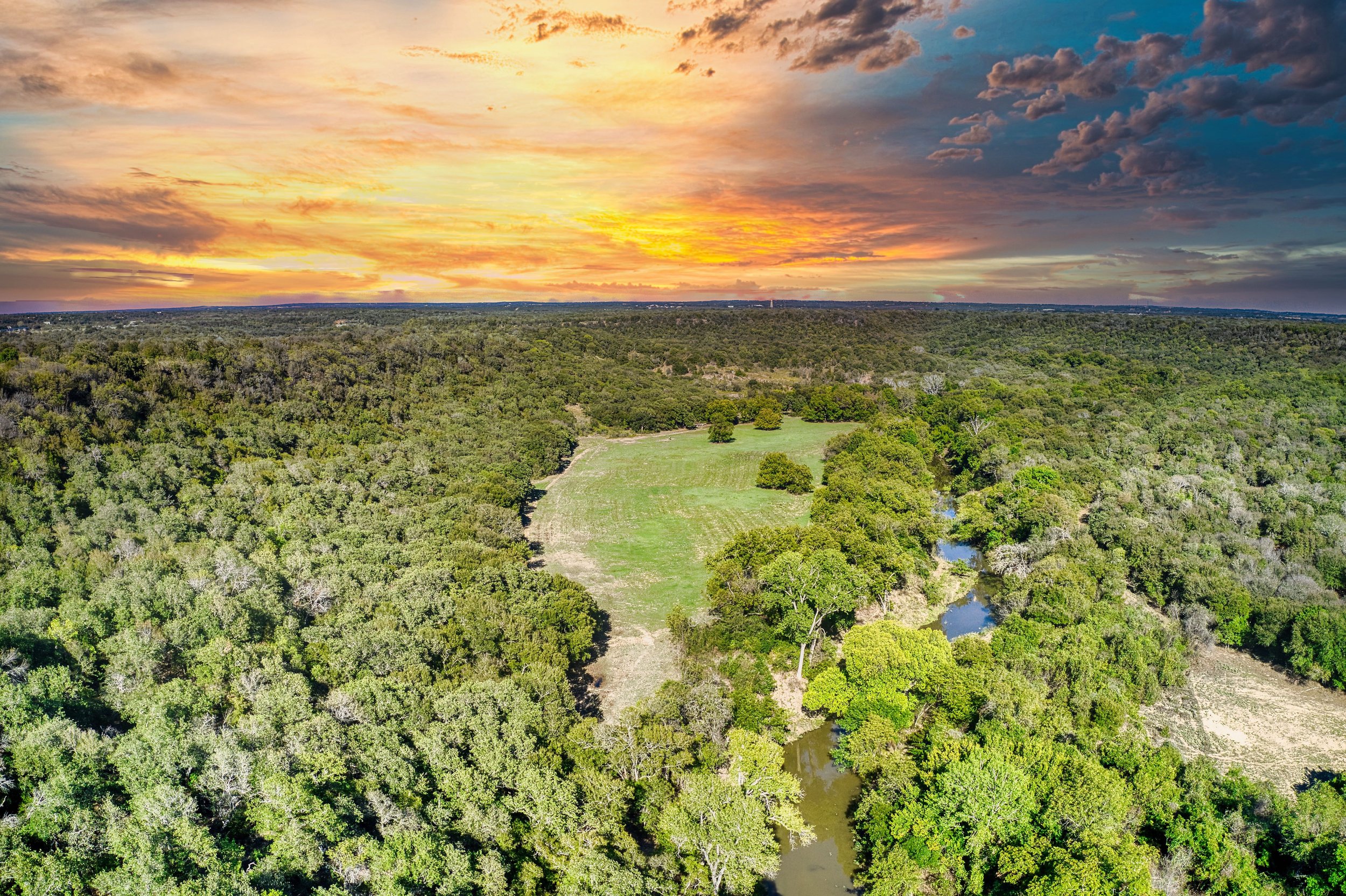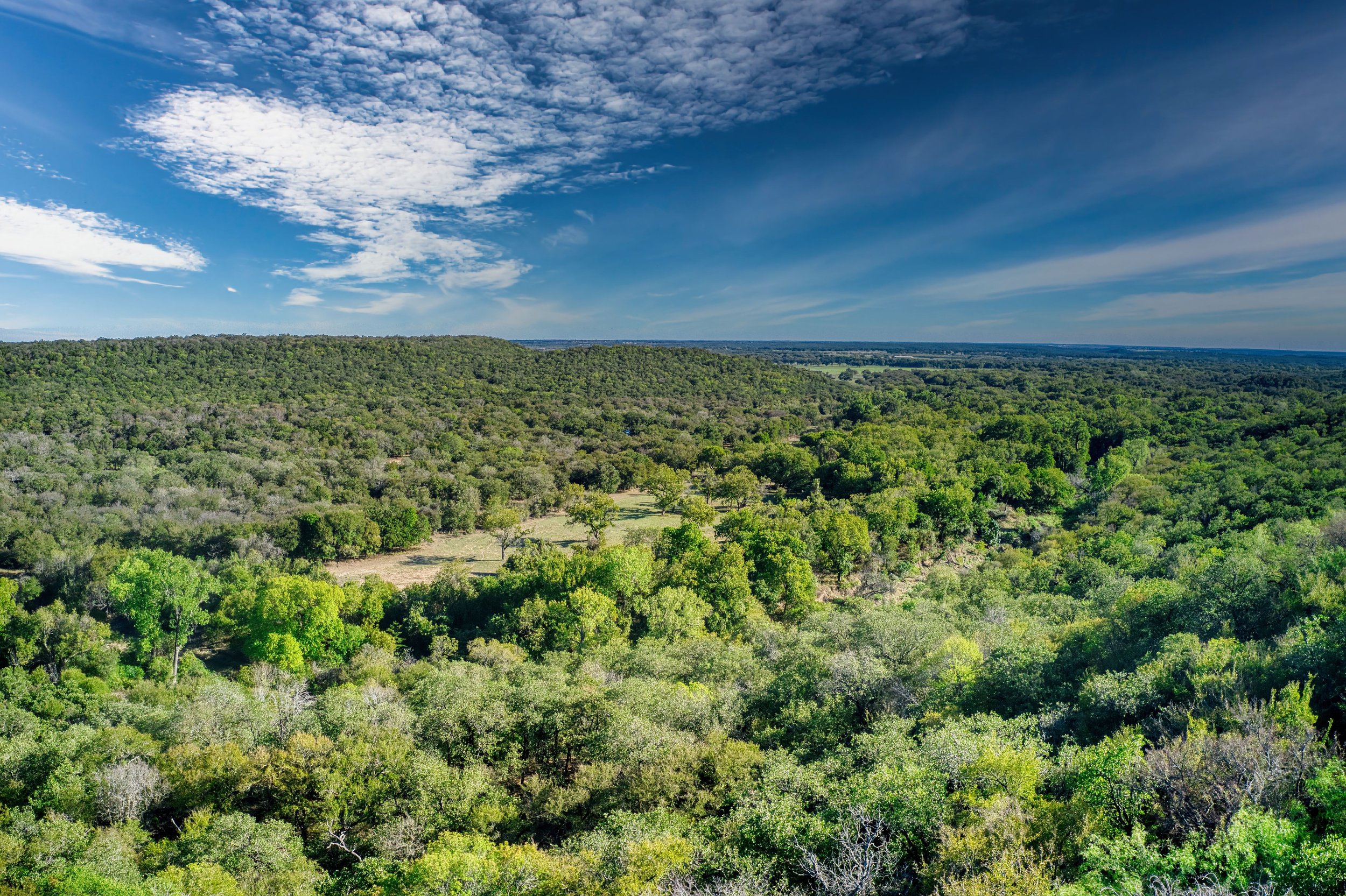EST. 1999
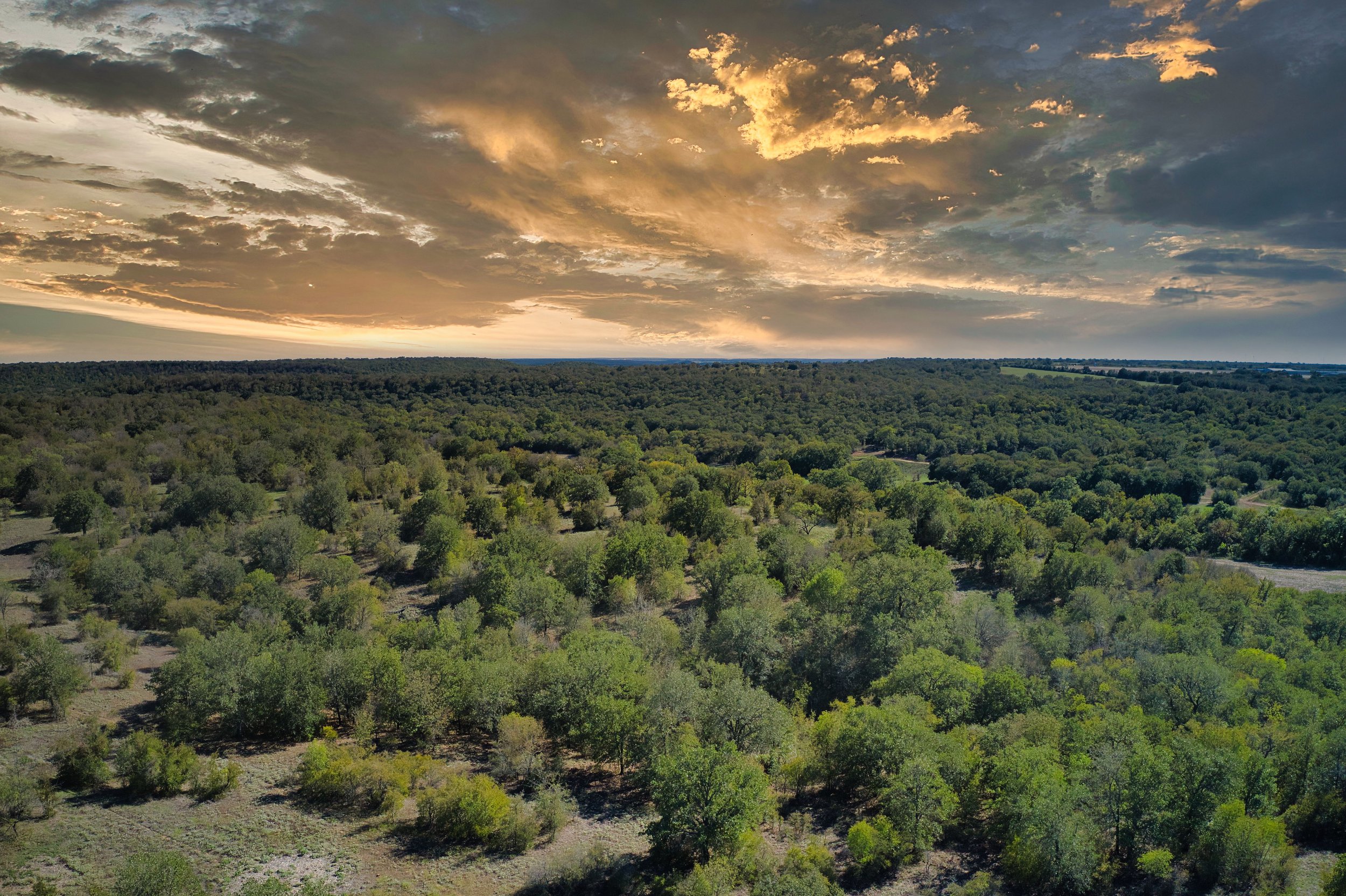
Offering 1,213+- Deeded Acres
$30,000,000
The History of Bunker Hill Ranch
The origin of Bunker Hill precedes the invention of the railway and the late nineteenth century coal rush. Before Texans dug for 'black diamonds,' Indians lived along the Brazos River. By 1850, the Delawares, Shawnees, Tonkawas, Wichita and Caddoes occupied the land. Tragically for the natives, the first settlers to western Parker County arrived in the 1850s, displacing the tribes as they built communities along tributaries of the Brazos River.
In the 1860s, a settler named Joseph B. Loving ran his cattle herd on ranch land. It is safe to assume that various cowboys used Bunker Hill land before a Franco-Texan company purchased large plots of Parker County for $1 per acre in 1878. The company eventually amassed nearly a million acres of land, some of which would later become Bunker Hill Ranch.
The Baker Hotel - 1930s. Image: tx.genweb.org.
Mineral Wells were discovered in 1879, just a few miles west of Bunker Hill. The ensuing mineral water craze fueled a railroad, spas, the Baker Hotel and an upstart tourist economy. By this time, numerous families owned individual 160 acre plots on Bunker Hill Ranch land.
Fuel was the next draw to Mineral Wells as William Whipple Johnson discovered coal in the counties of Erath and Palo Pinto. In 1887, he founded the Johnson Coal Mining Company with his brother. Contracted to sell their coal to the Texas and Pacific Railway Company, the brothers sunk their first shaft. The death of William's brother, Harvey Johnson, and undercapitalization forced William's hand to sell his land and mines to the Texas Pacific Coal Company.
By 1889, Johnson was back in the mining business when he purchased a section of present day Bunker Hill Ranch with his associate, Harry Taylor. The men planned to develop mines and build a railroad, so they formed the Weatherford Coal Company. Their first line opened on October 1st, 1891, carrying passengers from Weatherford to Mineral Wells. Johnson sold his land (present day Bunker Hill Ranch in addition to other land) to W.S. Stone on April 16, 1890.
The land changed hands again on November 27th, 1891, when W.S. Stone sold the land that he acquired from Johnson to the Texas Coal and Fuel Company. The deed noted 2213 acres "excluding the right-of-way of the Weatherford, Mineral Wells and Northwestern Railway." The Texas Coal and Fuel Company operated three shafts, each approximately 140 feet deep. Together, they produced a capacity of 1,500 tons of coal per day.
In 1895, 80% of the railroad company's outgoing freight was bituminous coal from the mines. Incoming freight included materials for mine maintenance and expansion. A town named Rock Creek was founded near the mines, partly located on present day Bunker Hill Ranch. The town peaked at 1,500 people between 1900 and 1905. Rock Creek included a general store, drugstore, butcher shop, post office, reading rooms, billiard halls, a hotel, churches and a schoolhouse. The mining company deducted $1 monthly from wages to pay for visits to the doctor's office.
The Texas Pacific Coal Company mining in Thurber, TX. Image: tsl.texas.gov.
The Texas Pacific Coal Company, owner of the Thurber mines (later called the Texas Pacific Coal and Oil Company), forced the takeover of the Texas Coal and Fuel Company and subsequently, the mines at Rock Creek. Mining operations continued for 7 years under the Texas Coal and Fuel Company's name.
By 1906, the Texas Coal and Fuel Company was losing money — $5,259.28 in 1906 and $14,505.42 in 1907. When the stockholders met in Thurber on April 15th, 1908, the president was authorized to shut down mining operations. The company kept mining for another year, but continued to lose money. The mine's leadership began to liquidate assets as soon as February in 1909. Four-room houses sold for $30 and a "negro church" sold for $40. Lumber and bricks were also sold.
To satisfy a debt of $50,000 that the Texas Coal and Fuel Company owed the Texas Pacific Coal and Oil Company, the Rock Creek land was transferred from Texas Coal and Fuel to Texas Pacific Coal and Oil. In 1941, the Texas Pacific Coal and Oil Company deeded a 30-foot wide strip to the city of Mineral Wells for US 180. Later that year, the remaining land was sold to W.N. Cox for $23,463.22.
Five years later, Cox sold his land in two parcels: 1,522.15 to C.E. Moreman and 555.27 acres to J.H. Pollard. The Moreman tract contained all of the property that would become present day Bunker Hill Ranch. In 1949, Moreman sold the land to a Mineral Wells physician, Dr. Andrew Jackson Evans. Two years later, Dr. Evans sold to Elvin Crow, Jr, whose note was held by Trinity Bond Investment Corporation. In 1959, Earl Smith and his wife, Maurine, assumed the note.
Earl Smith used the land for cattle, running 40 - 70 head. When asked about the origin of the name Bunker Hill, Smith said that he had always known the land as Bunker Hill. It is possible that the name refers to hills and bunkers left by the various mining operations throughout the years. Smith sold the land to Dr. Woods in the 1960s. He owned and operated the ranch until 1999 when he sold the property to its current owner.
This history is a summary of the report, "Coal, Cows & Rails — the Bunker Hill Ranch Story" as written by J'Nell L. Plate.
ranch land
Listing Agent:
Greg Potts- GS Realty Team at Fathom Realty
Greg Potts Realtor
817-694-1339
Greg Potts is a seasoned real estate professional with over a decade of dedicated experience in the dynamic Texas and Oklahoma real estate markets. As a trusted realtor, Greg has successfully represented numerous clients, facilitating transactions encompassing a staggering 50,000 acres of prime real estate. His unwavering commitment to excellence and client satisfaction has made him a respected name in the industry.
Greg's expertise spans a wide spectrum, from luxury residences to small commercial holdings, making him a versatile and knowledgeable realtor for any real estate need. His comprehensive understanding of these diverse sectors allows him to provide tailored solutions that meet the unique goals and preferences of each of his clients.
What truly sets Greg apart is his specialization in farm and ranch properties. Born and raised in the heart of ranching country, Greg possesses an intimate understanding of the ranch life that few can match. This background provides him with a distinct advantage when it comes to dealing with farm and ranch properties. Whether you're looking to buy or sell, Greg's insights into the nuances of these unique assets are invaluable.
With his extensive experience, diverse skill set, and deep roots in ranching, Greg is your go-to expert for all your real estate needs in Texas and Oklahoma. Contact Greg today to embark on a journey toward achieving your real estate goals.
Experience Matters
Mineral Wells Airport
Proximity to Ranch
The Airport directly boarders Bunker Hill Ranch on the South West corner of the property. This provides easy Access for use of the property if you or guest have the need for direct fly in access.
MIneral Wells Airport
The airport is owned and operated by the City of Mineral Wells. Its east side lies in Parker County and the west side in Palo Pinto County. A vital component of the area's economy, it offers many of the tools of much larger airports without the high prices, congestion and hassle.
The 6000 ft., LED-lighted, main runway has an Instrument Landing System installed and supports operations by large aircraft, such as the Boeing 737, DC-9 and the Lockheed Hercules C130, as well as corporate jets and other general aviation and military aircraft.
A 4400 ft. long, LED-lighted, secondary runway supports crosswind landings.
